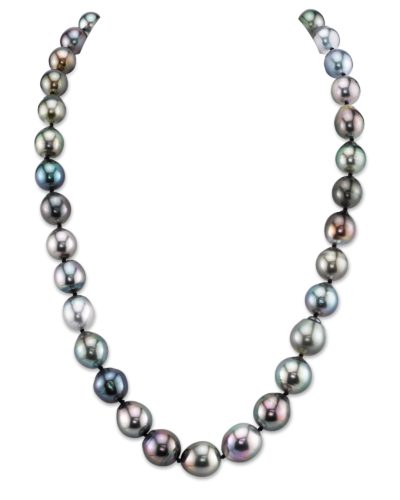What will Cause Pearls to be Different Colors?


Pearls are available in various shades and colors, from purple, green, blue, black, pink, cream, white, and even multicolor overtones. Several factors are responsible for a pearl’s color, yet it’s mostly up to chance. Black-lipped oysters don’t typically produce a white pearl. And it’s rare for additional oysters to create a black pearl. However, other than that, there’s little certainty about what pearl colors you might expect to harvest from specific oysters or specific areas.

The material which comprises a pearl, called nacre, is secreted by an oyster as a response to an irritant on the inside of the shell. Natural pearls are very expensive and rare and comprise of concentric layers of nacre surrounding a potentially microscopic original irritant, like a piece of sand. A cultured pearl is made by presenting a shell nucleus, usually perfectly round, and permitting a couple of nacre layers to form around it.

Whether you’re looking for something that you can wear every day or for a piece of jewelry that will take your ensemble to the next level for a special occasion, multicolored pearl necklaces are a one-of-a-kind option. A multicolored pearl necklace is a fantastic way to incorporate some color into your outfits, and with different color variations, you’re sure to find the piece that will perfectly fit with your skin tone and style.
Factors contributing to the pearl’s color include the kind of oyster, the number, and thickness of nacre layers. Potentially these trace elements within the oyster’s aquatic environment. Pearl manufacturers also may influence the pearl’s color to some level by presenting tissue from an additional oyster into the host oyster alongside the shell nucleus. The pearl colors are decided by a mixture of factors: iridescence, overtone, and the base color. Also, cultured pearls are occasionally dyed.

The thicker the nacre is, the richer the pearl’s color is going to be, and the more iridescence it’ll show. Thin nacre usually makes for a milky-appearing pearl that has few overtones. The pearl’s iridescence is due to the overlapping translucent nacre layers.
The pearl colors might or might not affect the cost, although color uniformity makes a pearl more valuable. Black pearls once were very valuable and rare, yet now they’re cultured and as a result, more broadly available. Natural white pearls will be more valuable and rarer than cultured black pearls. The ideal color largely is a matter of personal selection, or whichever most flatters an individual’s skin tone, although regional preferences do exist and might affect cost.
Signup now and receive an email once I publish new content.
Content Writer and Editor at The Pearl Source